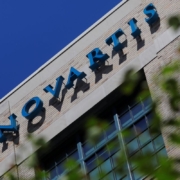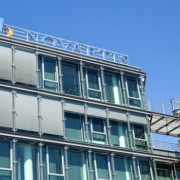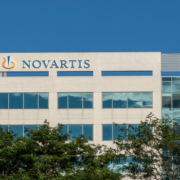Ireland’s lifesciences industry has embraced disruptive technology
Ireland’s lifesciences industry has embraced disruptive technology
By Rachel Shelly
Disruptive technology is propelling the lifesciences industry through a time of rapid and massive change. It is transforming product innovation and manufacturing. It’s making care more personalized, digitalized and data driven. And helping companies understand and lessen their environmental impact.
Navigating all this change and figuring out how to best leverage disruptive technologies to stay competitive can be challenging.
Many companies are still trying to determine what digital transformation should look like within their operations. Organizations are face pressing questions around how to carry out digital transformation efforts given the shortage of skilled labor and how to simplify the transformation process, such as by tapping into other work already underway to research and develop disruptive technologies.
There is no better place to look at how the lifesciences industry is embracing disruptive technologies than Ireland. Companies here are using new and disruptive technology to transform product innovation, manufacturing operations and sustainability efforts in life sciences. They are doing so using the collective power and support of industry, government and academia.
Embracing Disruption
The world’s biggest names in life sciences are showing what’s possible with digital transformation in their Irish operations.
An example is the Cork-based operations of Janssen Sciences Ireland who were recently designated a “sustainability lighthouse” by the World Economic Forum. Janssen is part of Johnson & Johnson, which has a goal to achieve carbon neutrality in its operations by 2030.Its Irish operations showcase how disruptive technology can help meet that goal.
Like all Johnson & Johnson operations in Ireland, Janssen’s Cork site is entirely powered by renewable energy sources. The site uses adaptive process control and digital twin technology to optimize manufacturing operations and other functions that are major energy consumers. This has enabled Janssen optimize its processes at the site and reduce carbon emissions per product kilogram by 56%.
Elsewhere in Ireland, Novartis is using digital technology to discover the art of the possible in the delivery of pharmaceutical solutions to patients. At the Dublin-based Novartis Global Service Centre, the company is using not only clinical science but also data science and artificial intelligence to drive innovation in service delivery.
On the connected-care front, companies are using their Ireland operations to reimagine what care can be.
At its Clonmel production site, for instance, Boston Scientific is producing digitalized and connected medical devices like its implantable cardioverter defibrillator. The device can detect high heart rates and send a shock to a patient’s heart to stop arrythmia. Remote monitoring of the device gives care providers access to vital patient data and notifications of patient issues – and it can give patients peace of mind that they’re still being cared for even outside the doctor’s office.
The Irish Advantage
What’s driving so many disruptive technology applications in Ireland? It is the result of several factors that have converged to create a unique ecosystem of innovation.
Talent availability is key. As the third largest pharmaceutical exporter in the world and the second largest exporter of medtech products in Europe, the Irish lifesciences sector has a sizable workforce. In fact, it’s the largest medtech employer per capita in Europe.
The country has focused on maintaining a talent pipeline. The education system is ranked in the top 10 in the world, and close cooperation between industry and academia helps ensure courses and degrees keep pace with the technology needs of the lifesciences industry. Additionally, companies operating in Ireland have access to the larger EU talent base.
Ireland supports innovation through government-funded projects. For example, the Advanced Manufacturing Center (AMC), a new world-class industry-led national center that enables Irish based enterprises to access, adopt and accelerate digital technologies, is due to open later this year. It is focused on technology deployment across Ireland’s Enterprise base by connecting technology, operations, sustainability, and skills. This world-class, purpose-built facility means Ireland is open and ready for next generation manufacturing investment.
The government is further developing the National Institute for Bioprocessing Research and Training (NIBRT) to support emerging opportunities in life sciences.
The Irish government makes a wide range of supports available to support and enable industry innovation.
A 25% tax credit is available through the government to companies that carry out R&D in Ireland. Separate grants are also available from IDA Ireland for R&D projects. Additionally, the Disruptive Technologies Innovation Fund (DTIF) is a €500 million fund that supports collaboration between multi-national corporations and academia specifically around disruptive technology. Many DTIF investments to date have been in the lifesciences industry, and the current round of funding is focused on collaborations in advanced and smart manufacturing.
Innovation Island
Ireland has become central to life science companies’ innovation agendas. Today, three in four medtech companies operating in Ireland carry out R&D activities in the country. And because these activities are being supported by a rich talent pool and pro-innovation ecosystem, there is virtually no limit to where they might take the industry next.






 Adobe Stock, Yingko
Adobe Stock, Yingko


